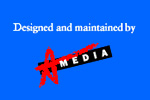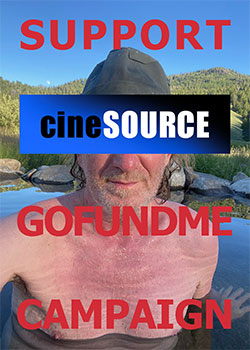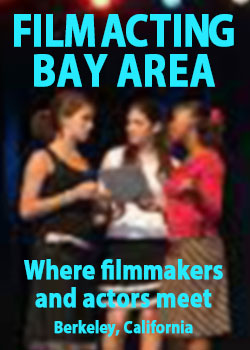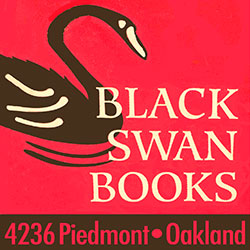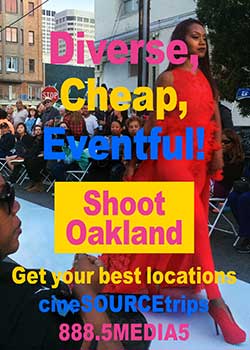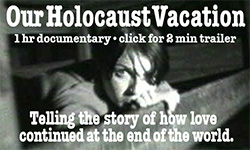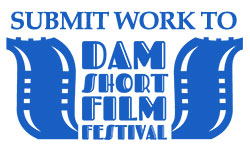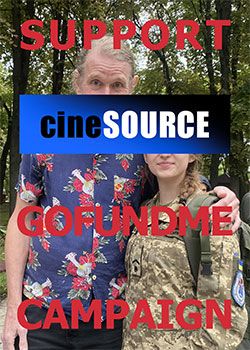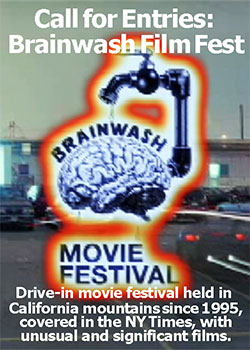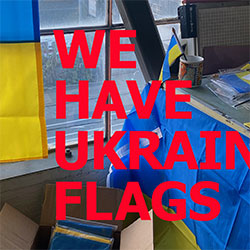Ladies First at This Year’s Sundance
by Soumyaa Kapil Behrens
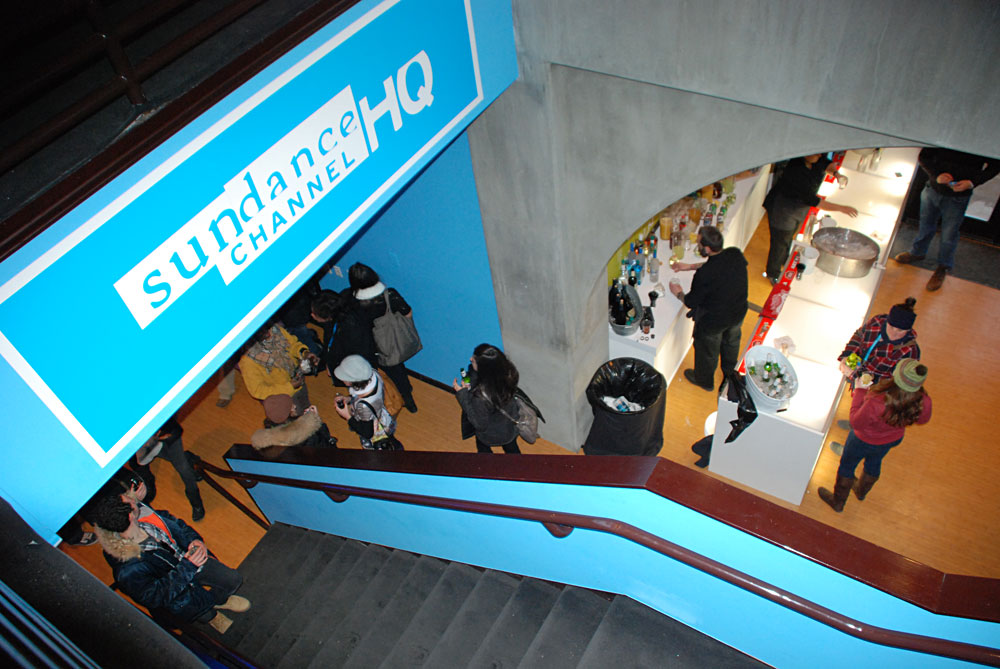 Descend into a demimonde of delicious imagery and food at the digs of the Sundance Channel (NOTE: Sundance is an institute, festival, channel and many other things.) photo: S. K. BehrensAs usual, a long list of Bay Area films on social issues debuted at the Sundance Film Festival. They ranged from “We Were Here”, a feature documentary by David Weissman, which tells the heart-wrenching story of the San Francisco's AIDS crisis, to “Barber of Birmingham: Foot Soldier of the Civil Rights Movement,” a short about the now 85-year old James Armstrong by local doc titans Gail Dolgin and Robin Fryday.
Descend into a demimonde of delicious imagery and food at the digs of the Sundance Channel (NOTE: Sundance is an institute, festival, channel and many other things.) photo: S. K. BehrensAs usual, a long list of Bay Area films on social issues debuted at the Sundance Film Festival. They ranged from “We Were Here”, a feature documentary by David Weissman, which tells the heart-wrenching story of the San Francisco's AIDS crisis, to “Barber of Birmingham: Foot Soldier of the Civil Rights Movement,” a short about the now 85-year old James Armstrong by local doc titans Gail Dolgin and Robin Fryday.
Bay Area women were hardly the wallflowers at this year’s ‘Dance. While women everywhere continue to make big gains in indie film, our women dominated the doc side of the hottest festival in the genre. Even more amazing, their films were often personal, using their own stories as conduits for the good of others. "Connected" by Tiffany Shlain, "!Women Art Revolution!" by Lynn Hershmann Leeson and “Crime after Crime" by Yoav Potash about Deborah Peagler also explore intergenerational issues.
Even Jennifer Seibel Newsom outshined hubby Gavin, former San Francisco mayor and the new Lieutenant Governor of California, with “Miss Representation,” a provocative take on modern-day feminist politics and female representation.
It was no big secret, either. Almost everyone in the Bay Area film community was able to watch at least one of these projects unfold. Moreover, many filmmakers relied on local resources and programs to wend their way through their production's difficult moments. Hence, watching them emerge in Park City, fully formed, was rather rewarding, like watching a long-distance runner approach her last mile. We have been on the sidelines, rooting for these projects, anticipating when they will turn the last corner and Sundance is a phenomenal finish line, no doubt. More thrilling is the knowledge that many of these projects are just getting started with distribution and will be seen broadly.
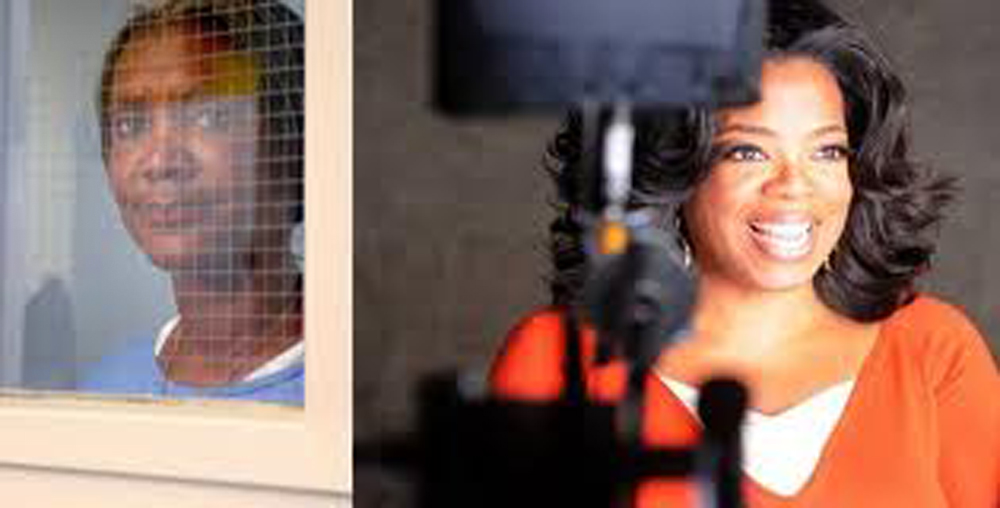 An image of Deborah Peagler (left), the subject of 'Crime after Crime' by Bay Arean Yoav Potash, and Oprah Winfry, whose new channel, OWN, picked it up. photo: Sundance Institute“Crime after Crime,” directed by local filmmaker Yoav Potash, tells the horrifying tale of injustice suffered by Deborah Peagler, a black woman convicted of helping murder her abusive boyfriend in the 1980’s. Overly charged by the D.A. and overly incarcerated by the California penal system, Deborah Peagler had little hope of ever getting out. It was a non-profit program linking lawyers to underserved women that brought Deborah together with two Bay Area real estate attorneys who took on her case for free and stuck with her for eight years, eventually securing her release. The film, which depicts this story, was quickly picked up at Sundance this year by Oprah Winfrey’s newly launched network, OWN.
An image of Deborah Peagler (left), the subject of 'Crime after Crime' by Bay Arean Yoav Potash, and Oprah Winfry, whose new channel, OWN, picked it up. photo: Sundance Institute“Crime after Crime,” directed by local filmmaker Yoav Potash, tells the horrifying tale of injustice suffered by Deborah Peagler, a black woman convicted of helping murder her abusive boyfriend in the 1980’s. Overly charged by the D.A. and overly incarcerated by the California penal system, Deborah Peagler had little hope of ever getting out. It was a non-profit program linking lawyers to underserved women that brought Deborah together with two Bay Area real estate attorneys who took on her case for free and stuck with her for eight years, eventually securing her release. The film, which depicts this story, was quickly picked up at Sundance this year by Oprah Winfrey’s newly launched network, OWN.
After a long and tenacious legal battle and after developing lung cancer, Deborah Peagler was finally released from prison. She lived for ten months outside of prison and used much of her time to advocate for battered women’s rights and be with her family. Potash does good in making a piece that can continue to share Deborah’s story for many more generations to come. Deborah’s daughter, also the daughter of the man Deborah helped kill, traveled with the film to share the narrative of her and her mother’s experiences. She is a model human being and was able to find the positive side of this unbearable situation. In the film, her character is delicately woven in, and she surprises us again and again whenmet with obstinate adversity and she answers with hope and love. Her greatest joy is to spend a few brief moments "outside" with her mother.
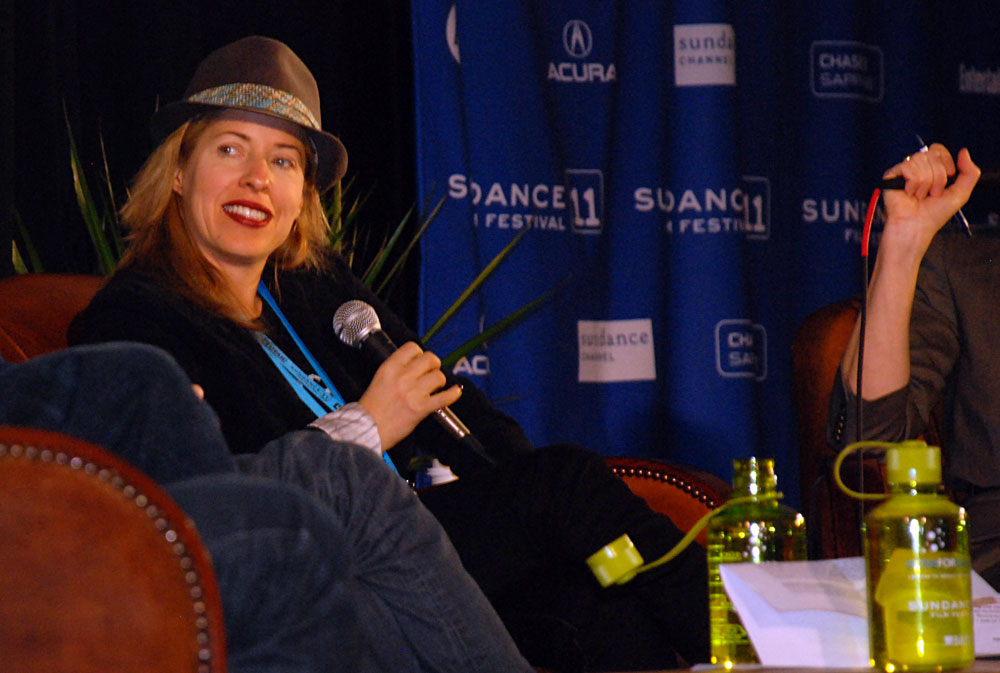 Tiffany Shlain discusses technology and the brain at the Filmmaker Lodge, one of Sundance's day-long venues dedicated to filmmakers and panels. photo: S.K. BehrensSpeaking of prodigal daughters, there is Tiffany Shlain, filmmaker, creator of the online Webby Awards, and daughter of the best-selling author, Leonard Shlain. Indeed, she calls upon her father, also riddled with cancer, as a guardian angel for her newest film, “Connected.” The project is an attempt to visualize and identify what connects us as individuals to everything else imaginable in the world. An ambitious goal on Shlain’s part, but well realized through the narrative of her relationship to her father and his battle with terminal cancer. “Connected” is very successful at showing the continuous loop of life in the metaphor of Shlain’s family affairs.
Tiffany Shlain discusses technology and the brain at the Filmmaker Lodge, one of Sundance's day-long venues dedicated to filmmakers and panels. photo: S.K. BehrensSpeaking of prodigal daughters, there is Tiffany Shlain, filmmaker, creator of the online Webby Awards, and daughter of the best-selling author, Leonard Shlain. Indeed, she calls upon her father, also riddled with cancer, as a guardian angel for her newest film, “Connected.” The project is an attempt to visualize and identify what connects us as individuals to everything else imaginable in the world. An ambitious goal on Shlain’s part, but well realized through the narrative of her relationship to her father and his battle with terminal cancer. “Connected” is very successful at showing the continuous loop of life in the metaphor of Shlain’s family affairs.
It will be exciting to see what her outreach plan entails since there are many ways to use the concept of being connected for social good in our world today. An obvious one is encouraging medical researchers and pharmaceutical companies to share data instead of seeking competitive patents to strike it rich in the drug market. Shlain’s own father survived his first battle with cancer at 37 years of age through an experimental treatment.
Another "connected" idea is personified by the fascinating local organization MAPlight.org which maintains a huge database connecting campaign donations with voting habits so people can cross-reference material and understand how their representatives are voting compared to how they are funded. Shlain has opened a box of possibilities with this film. A force of nature herself, she is poised to use the film to tackle a wide variety of modern social issues.
Shlain is also very successful at connecting with her audience on a human level through Q and A’s after each film screening, and by sitting on numerous panels during her time in Park City. As a member of the Bay Area film community, Shlain often donates her time to local nonprofits in support of their programs. She is friendly, bold and always collaborating with others. The “Connected” team at Sundance was large and inclusive, 10 people deep at most times, manifesting yet again, the idea behind the project.
The strong presence of family and generations emanates through all these films. These filmmakers are concretely linking generations using the medium of photography and motion pictures. In fact, home movie and photos are a prevalent story telling means in all these films. They strive to show the evidence of time past in images.
“Crime after Crime” uses old family pictures as well as uncovering aged documents to evidence the tragic imprisonment of Deborah Peagler. It eventually becomes a significant portion of the film’s overarching narrative, showing how much time was so callously lost by a careless judicial process. Shlain’s film is openly structured around home movie footage of her father, depicting him in moments of glory as well as defeat. Shlain decides, through these renderings of her father’s life, to take the helm her father had usually occupied but could no longer sustain.
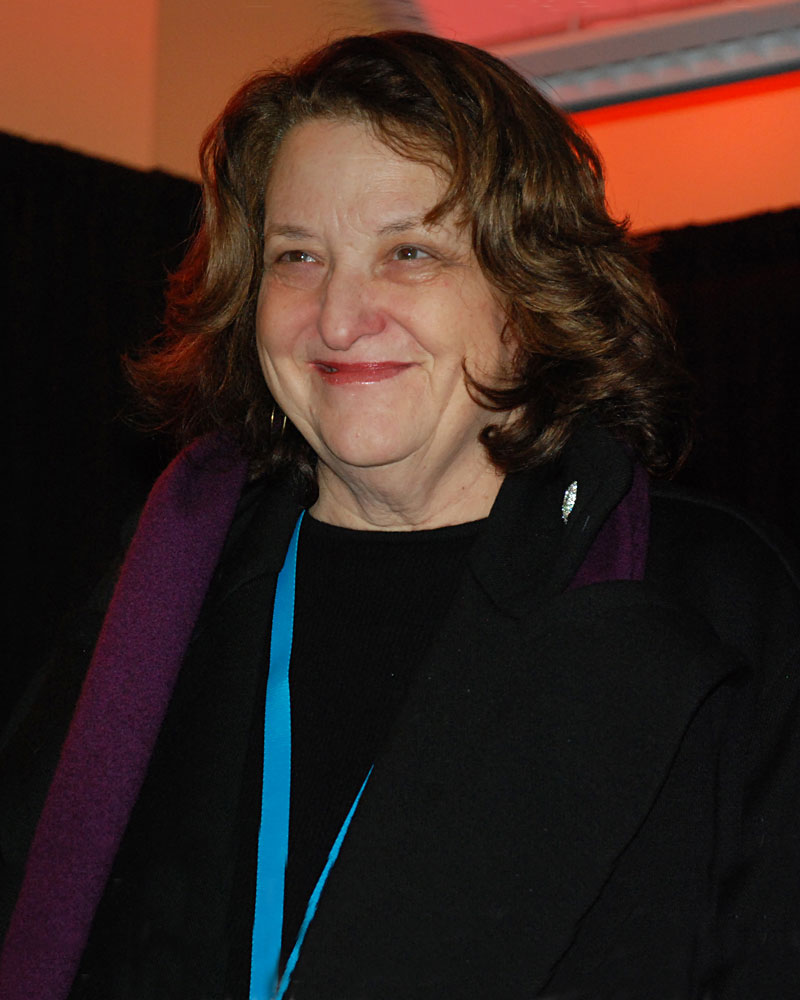 Lynn Hershmann Leeson brought both a movie, '!Women Art Revolution!,' and a performance/installation, 'RAW/WAR.' photo: S.K. BehrensLynn Hershmann Leeson also manifests the past to launch her newest project into the public eye. “!Women Art Revolution!” chronicles the history of the feminist movement in the Bay Area through Lynn’s personal home video interviews of several key figures that passed through her lens in Berkeley, California. Not aware at the time that these videos would accrue into one of her most ambitious projects, Lynn followed her instinct to record and make evidence of something she felt would be important in the future. The documentary consists of her video interviews along with other archival footage from the movement. It re-tells famous stories like how Judy Chicago got her name from an intimate and personal lens; it also gives a healthy overview of the artistry and events from the feminist era in Berkeley.
Lynn Hershmann Leeson brought both a movie, '!Women Art Revolution!,' and a performance/installation, 'RAW/WAR.' photo: S.K. BehrensLynn Hershmann Leeson also manifests the past to launch her newest project into the public eye. “!Women Art Revolution!” chronicles the history of the feminist movement in the Bay Area through Lynn’s personal home video interviews of several key figures that passed through her lens in Berkeley, California. Not aware at the time that these videos would accrue into one of her most ambitious projects, Lynn followed her instinct to record and make evidence of something she felt would be important in the future. The documentary consists of her video interviews along with other archival footage from the movement. It re-tells famous stories like how Judy Chicago got her name from an intimate and personal lens; it also gives a healthy overview of the artistry and events from the feminist era in Berkeley.
But Leeson doesn’t stop there. She acknowledges the limitations of her own film and the overwhelming amount of art, scholarship, and people who were part of this movement. As part of her endeavor, she has also teamed up with Stanford University to create the world’s most extensive interactive database on feminist history in the world. This portion of her project called, “RAW/WAR” also appeared at Sundance in the New Frontier Venue this year.
The New Frontier venue is a location for installation art and interactive media projects at Sundance. Along with Leeson’s interactive database this year, it housed Lance Weiler’s “Pandemic” project as well as James Franco’s “Three’s Company” video installation. At an artist’s talk sponsored by the venue, Leeson introduced the project and demonstrated its interactive qualities. A specially designed flashlight illuminates dark corners of a room on a screen and reveals the categories of feminist history. It comments on feminist history as something that has been left shadowed and needing illumination. It is an expanding system designed by Stanford that is available online and will allow users to upload their own histories. Leeson’s goal is to leave a permanent mark on the pages of history detailing the beginnings of the feminist movement and she is using both old and new media to accomplish that.
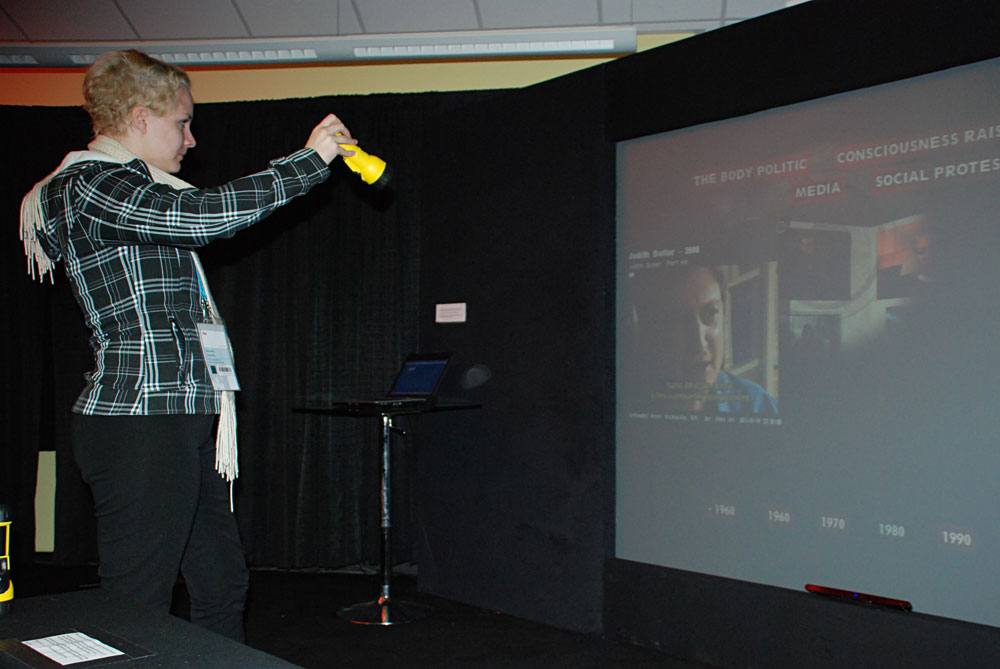 An associate demonstrates Lynn Hershmann Leeson interactive database, "RAW/WAR" in Sundance's New Frontier Venue. photo: S.K. BehrensIt seems that media is a vibrant tool for closing the ever-widening gaps in generational knowledge and experience today. The combined technology of the Internet, film and digital video brings people from a wide and distant scope together on issues that resonate with all of them. It can unwrap the past in way that speaks to the future and it empowers women, especially, to continue an age-old tradition of handing down wisdom from generation to generation in a whole new way. The Bay Area women highlighted at Sundance this year are just part of many artists who are both creators and subjects of films that span a wide range of disciplines.
An associate demonstrates Lynn Hershmann Leeson interactive database, "RAW/WAR" in Sundance's New Frontier Venue. photo: S.K. BehrensIt seems that media is a vibrant tool for closing the ever-widening gaps in generational knowledge and experience today. The combined technology of the Internet, film and digital video brings people from a wide and distant scope together on issues that resonate with all of them. It can unwrap the past in way that speaks to the future and it empowers women, especially, to continue an age-old tradition of handing down wisdom from generation to generation in a whole new way. The Bay Area women highlighted at Sundance this year are just part of many artists who are both creators and subjects of films that span a wide range of disciplines.
Not resting on reputation, even Sundance has invested heavily in its future with traditional event venues redesigned into interactive new media locations. There were digital photo booths alongside old-fashioned ones, check-in stations with ipads, and refillable water bottles at every stop. Several panels and workshops were dedicated to new media and its effect on film preservation, creation and distribution.
“Making Art Matter” featured panelists from a wide variety of artistic disciplines including Norman Lear (television) and George C. Wolfe (theatre) who spoke about what place and purpose art has in our society today. It was not without due cause since our national government is considering the elimination of all funding for the NEA and NEH right now. As media becomes more relevant, more empowering and more useful to our world, our government seeks to eliminate it.
One basic message: Don’t be a wallflower. Be like these women, who bravely confronted their lives by chronicling their personal history and passed it on to the next generation. When you write your congresswomen, mention these artists, use pictures, and url video links to illustrate your point that art matters, art empowers, and art is everywhere you look. At a minimum, follow your own media instincts and record your life in some way. It may have far-reaching implications you have yet to discover.
Sundance, this year, took on a lot of qualities we pride ourselves on in the Bay Area: joining up, speaking out, and empowering underrepresented peoples in the medium of art. The good news is 38 films were picked up for distribution this year, many with social justice themes and many directed by or about women.
Posted on Feb 24, 2011 - 08:27 AM
by Soumyaa Kapil Behrens
 Descend into a demimonde of delicious imagery and food at the digs of the Sundance Channel (NOTE: Sundance is an institute, festival, channel and many other things.) photo: S. K. Behrens
Descend into a demimonde of delicious imagery and food at the digs of the Sundance Channel (NOTE: Sundance is an institute, festival, channel and many other things.) photo: S. K. BehrensBay Area women were hardly the wallflowers at this year’s ‘Dance. While women everywhere continue to make big gains in indie film, our women dominated the doc side of the hottest festival in the genre. Even more amazing, their films were often personal, using their own stories as conduits for the good of others. "Connected" by Tiffany Shlain, "!Women Art Revolution!" by Lynn Hershmann Leeson and “Crime after Crime" by Yoav Potash about Deborah Peagler also explore intergenerational issues.
Even Jennifer Seibel Newsom outshined hubby Gavin, former San Francisco mayor and the new Lieutenant Governor of California, with “Miss Representation,” a provocative take on modern-day feminist politics and female representation.
It was no big secret, either. Almost everyone in the Bay Area film community was able to watch at least one of these projects unfold. Moreover, many filmmakers relied on local resources and programs to wend their way through their production's difficult moments. Hence, watching them emerge in Park City, fully formed, was rather rewarding, like watching a long-distance runner approach her last mile. We have been on the sidelines, rooting for these projects, anticipating when they will turn the last corner and Sundance is a phenomenal finish line, no doubt. More thrilling is the knowledge that many of these projects are just getting started with distribution and will be seen broadly.
 An image of Deborah Peagler (left), the subject of 'Crime after Crime' by Bay Arean Yoav Potash, and Oprah Winfry, whose new channel, OWN, picked it up. photo: Sundance Institute
An image of Deborah Peagler (left), the subject of 'Crime after Crime' by Bay Arean Yoav Potash, and Oprah Winfry, whose new channel, OWN, picked it up. photo: Sundance InstituteAfter a long and tenacious legal battle and after developing lung cancer, Deborah Peagler was finally released from prison. She lived for ten months outside of prison and used much of her time to advocate for battered women’s rights and be with her family. Potash does good in making a piece that can continue to share Deborah’s story for many more generations to come. Deborah’s daughter, also the daughter of the man Deborah helped kill, traveled with the film to share the narrative of her and her mother’s experiences. She is a model human being and was able to find the positive side of this unbearable situation. In the film, her character is delicately woven in, and she surprises us again and again whenmet with obstinate adversity and she answers with hope and love. Her greatest joy is to spend a few brief moments "outside" with her mother.
 Tiffany Shlain discusses technology and the brain at the Filmmaker Lodge, one of Sundance's day-long venues dedicated to filmmakers and panels. photo: S.K. Behrens
Tiffany Shlain discusses technology and the brain at the Filmmaker Lodge, one of Sundance's day-long venues dedicated to filmmakers and panels. photo: S.K. BehrensIt will be exciting to see what her outreach plan entails since there are many ways to use the concept of being connected for social good in our world today. An obvious one is encouraging medical researchers and pharmaceutical companies to share data instead of seeking competitive patents to strike it rich in the drug market. Shlain’s own father survived his first battle with cancer at 37 years of age through an experimental treatment.
Another "connected" idea is personified by the fascinating local organization MAPlight.org which maintains a huge database connecting campaign donations with voting habits so people can cross-reference material and understand how their representatives are voting compared to how they are funded. Shlain has opened a box of possibilities with this film. A force of nature herself, she is poised to use the film to tackle a wide variety of modern social issues.
Shlain is also very successful at connecting with her audience on a human level through Q and A’s after each film screening, and by sitting on numerous panels during her time in Park City. As a member of the Bay Area film community, Shlain often donates her time to local nonprofits in support of their programs. She is friendly, bold and always collaborating with others. The “Connected” team at Sundance was large and inclusive, 10 people deep at most times, manifesting yet again, the idea behind the project.
The strong presence of family and generations emanates through all these films. These filmmakers are concretely linking generations using the medium of photography and motion pictures. In fact, home movie and photos are a prevalent story telling means in all these films. They strive to show the evidence of time past in images.
“Crime after Crime” uses old family pictures as well as uncovering aged documents to evidence the tragic imprisonment of Deborah Peagler. It eventually becomes a significant portion of the film’s overarching narrative, showing how much time was so callously lost by a careless judicial process. Shlain’s film is openly structured around home movie footage of her father, depicting him in moments of glory as well as defeat. Shlain decides, through these renderings of her father’s life, to take the helm her father had usually occupied but could no longer sustain.
 Lynn Hershmann Leeson brought both a movie, '!Women Art Revolution!,' and a performance/installation, 'RAW/WAR.' photo: S.K. Behrens
Lynn Hershmann Leeson brought both a movie, '!Women Art Revolution!,' and a performance/installation, 'RAW/WAR.' photo: S.K. BehrensBut Leeson doesn’t stop there. She acknowledges the limitations of her own film and the overwhelming amount of art, scholarship, and people who were part of this movement. As part of her endeavor, she has also teamed up with Stanford University to create the world’s most extensive interactive database on feminist history in the world. This portion of her project called, “RAW/WAR” also appeared at Sundance in the New Frontier Venue this year.
The New Frontier venue is a location for installation art and interactive media projects at Sundance. Along with Leeson’s interactive database this year, it housed Lance Weiler’s “Pandemic” project as well as James Franco’s “Three’s Company” video installation. At an artist’s talk sponsored by the venue, Leeson introduced the project and demonstrated its interactive qualities. A specially designed flashlight illuminates dark corners of a room on a screen and reveals the categories of feminist history. It comments on feminist history as something that has been left shadowed and needing illumination. It is an expanding system designed by Stanford that is available online and will allow users to upload their own histories. Leeson’s goal is to leave a permanent mark on the pages of history detailing the beginnings of the feminist movement and she is using both old and new media to accomplish that.
 An associate demonstrates Lynn Hershmann Leeson interactive database, "RAW/WAR" in Sundance's New Frontier Venue. photo: S.K. Behrens
An associate demonstrates Lynn Hershmann Leeson interactive database, "RAW/WAR" in Sundance's New Frontier Venue. photo: S.K. BehrensNot resting on reputation, even Sundance has invested heavily in its future with traditional event venues redesigned into interactive new media locations. There were digital photo booths alongside old-fashioned ones, check-in stations with ipads, and refillable water bottles at every stop. Several panels and workshops were dedicated to new media and its effect on film preservation, creation and distribution.
“Making Art Matter” featured panelists from a wide variety of artistic disciplines including Norman Lear (television) and George C. Wolfe (theatre) who spoke about what place and purpose art has in our society today. It was not without due cause since our national government is considering the elimination of all funding for the NEA and NEH right now. As media becomes more relevant, more empowering and more useful to our world, our government seeks to eliminate it.
One basic message: Don’t be a wallflower. Be like these women, who bravely confronted their lives by chronicling their personal history and passed it on to the next generation. When you write your congresswomen, mention these artists, use pictures, and url video links to illustrate your point that art matters, art empowers, and art is everywhere you look. At a minimum, follow your own media instincts and record your life in some way. It may have far-reaching implications you have yet to discover.
Sundance, this year, took on a lot of qualities we pride ourselves on in the Bay Area: joining up, speaking out, and empowering underrepresented peoples in the medium of art. The good news is 38 films were picked up for distribution this year, many with social justice themes and many directed by or about women.
Posted on Feb 24, 2011 - 08:27 AM













